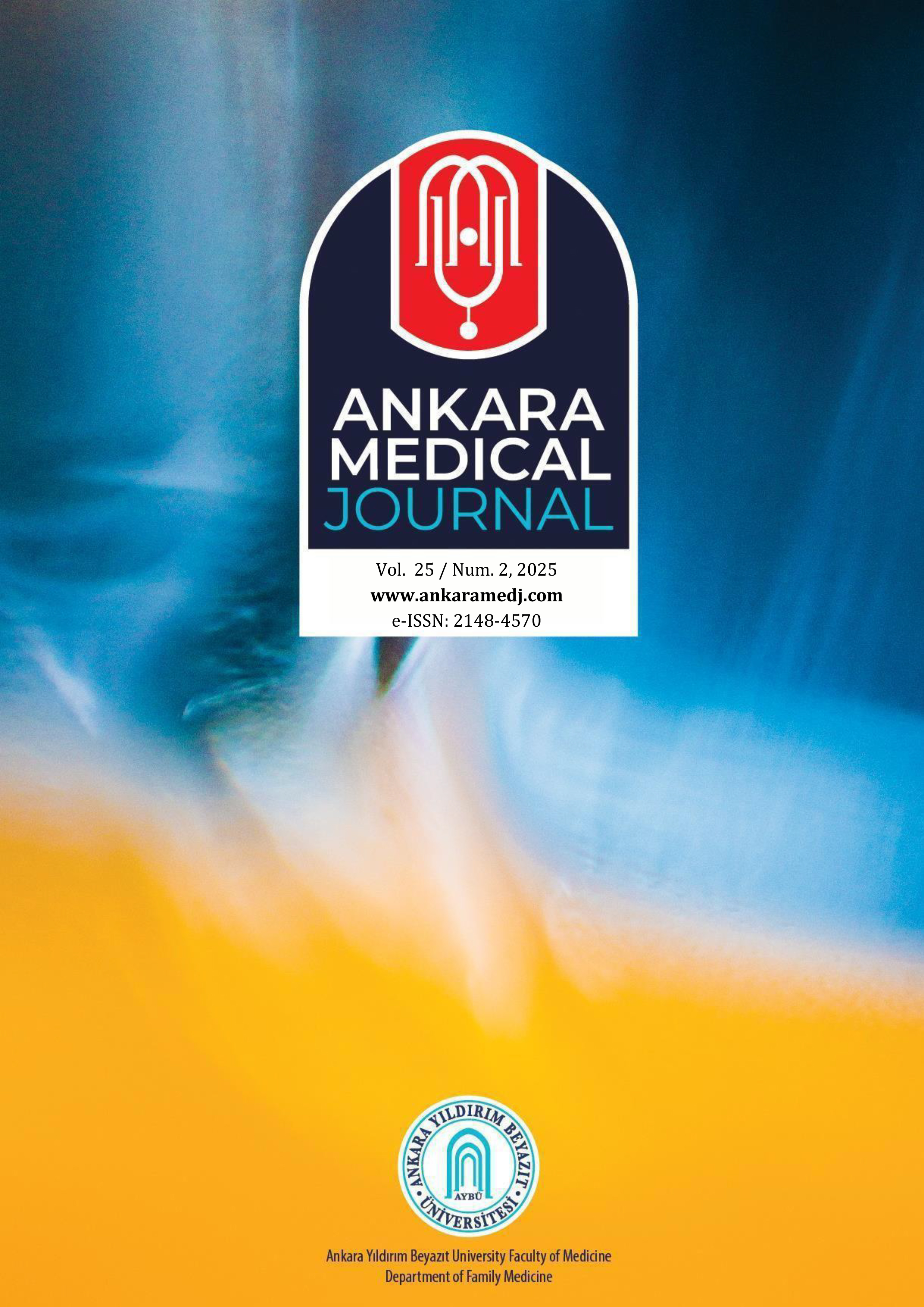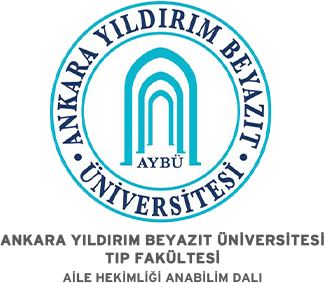Tıkanma sarılığında oksidatif stresin yeni bir biyolojik belirteci: Dinamik tiyol-disülfid homeostazı
Fadime Güllü Haydar1, Yavuz Otal2, Gamze Avcıoğlu3, Selda Kıdak Özkaya4, Alp Şener4, Servan Gökhan4, Yunus Halil Polat5, Özcan Erel61Ankara Şehir Hastanesi,Genel Cerrahi Kliniği,Ankara,Türkiye2Ankara Şehir Hastanesi,Acil Tıp Kliniği,Ankara,Türkiye
3Karadeniz Ereğli Devlet hastanesi, Tıbbi Biyokimya Bölümü,Zonguldak, Turkey
4Yildirim Beyazit University Tıp fakültesi, Acil Tıp Kliniği, Ankara, Turkey
5Ankara Şehir Hastanesi, Gastroenteroloji Kliniği,Ankara,Türkiye
6Yildirim Beyazit University Tıp fakültesi, Tıbbi Biyokimya Kliniği, Ankara, Turkey
GİRİŞ ve AMAÇ: Tiyol-disülfid(TDH) homeostazı birçok hastalıkta araştırılmıştır. Bu çalışmanın amacı, tıkanma sarılığı tanısı konan hastalarda dinamik tiyol-disülfid homeostazını araştırmak ve dinamik tiyol-disülfid homeostazını iskemi modifiye albümin ile karşılaştırmaktır
YÖNTEM ve GEREÇLER: Acil servise başvuran 69 hasta ve 77 sağlıklı gönüllüden oluşan toplam 146 katılımcı çalışmaya dahil edildi. Hastalardan başvuru anında detaylı kan örnekleri alındı.
Tıkanma sarılığı tanısı konulan hastalarda, başvuru sırasında Erel ve Neselioğlu tarafından geliştirilen yepyeni bir yöntemle tiyol/disülfit düzeylerine bakıldı. Veriler bilgisayar sisteminde değerlendirildi.
BULGULAR: Tıkanma sarılığı olan hastada total tiyol (p=0,025) ve nativ tiyol (p=0,023) düzeyleri kontrol grubuna göre istatistiksel olarak anlamlı derecede düşüktü. Nativ tiyol düzeyleri ile ALP (r =-0,262, p<0,01), üre (r =-0,313, p<0,01), total bilirubin (r =-0,388, p) arasında anlamlı negatif korelasyon olduğu gözlendi. <0,01), direkt bilirubin (r =-0,351, p<0,01) seviyeleri. Aynı zamanda, disülfit düzeyi (p = 0,235) hasta grubunda kontrol grubuna göre daha düşüktü ancak istatistiksel olarak anlamlı değildi. Kontrol grubunda iskemi modifiye albümin (İMA) değerlerinin tıkanma sarılığı grubuna göre daha düşük olduğu bulundu (p=0,03).
TARTIŞMA ve SONUÇ: Tıkanma sarılığı patogenezinde total tiyol ve nativ tiyol seviyeleri azalmaktadır. Tiyol-disülfit homeostazı, tıkanma sarılığında oksidatif stresin yeni bir biyobelirteç olabilir
A new biomarker of oxidative stress in obstructive jaundice: Dynamic thiol-disulphide homeostasis
Fadime Güllü Haydar1, Yavuz Otal2, Gamze Avcıoğlu3, Selda Kıdak Özkaya4, Alp Şener4, Servan Gökhan4, Yunus Halil Polat5, Özcan Erel61Department of General Surgery,Ankara City Hospital, Ankara, Turkey2Department of Emergency Medicine,Ankara City Hospital, Ankara, Turkey
3Department of Medical Biochemistry, Karadeniz Ereğli State Hospital,Zonguldak, Turkey
4Department of Emergency Medicine, Faculty of Medicine, Yildirim Beyazit University, Ankara, Turkey
5Department of Gastroenterology, Ankara City Hospital,Ankara, TURKEY
6Department of Medical Biochemistry, Faculty of Medicine, Yildirim Beyazit University, Ankara, Turkey
INTRODUCTION: The thiol-disulphide (TDH) homeostasis was investigated in a number of disorders. The aim of the present study is to investigate the dynamic thiol-disulphide homeostasis in patients diagnosed with obstructive jaundice and to compare the dynamic thiol-disulphide homeostasis with ischemia-modified albumin.
METHODS: A total of 146 participants who were admitted to the emergency department and who consisted of 69 patients and 77 healthy volunteers were included in the study. Detailed blood samples were obtained from the patients at the time of admission. Thiol/disulphide levels were examined using a brand-new method developed by Erel and Neselioglu on the patients diagnosed with obstructive jaundice during the admission. Data were evaluated in the computer system.
RESULTS: The levels of total thiol (p =0.025) and native thiol (p =0.023) were statistically significantly lower in the patient with obstructive jaundice than in the control group. It was observed that there was a significant negative correlation between the native thiol levels and the ALP (r =-0.262, p<0.01), urea (r =-0.313, p<0.01), total bilirubin (r =-0.388, p<0.01), direct bilirubin (r =-0.351, p<0.01) levels. At the same time, the level of disulphide (p = 0.235) was lower in the patient group than in the control group but not statistically significant. It was found that the ischemia modified albumin (IMA) values were lower in the control group than the obstructive jaundice group (p = 0.03).
DISCUSSION AND CONCLUSION: Total thiol and native thiol levels decrease in obstructive jaundice pathogenesis. Thiol-disulphide homeostasis may be a new biomarker of oxidative stress in obstructive jaundice.
Makale Dili: İngilizce
(727 kere indirildi)





